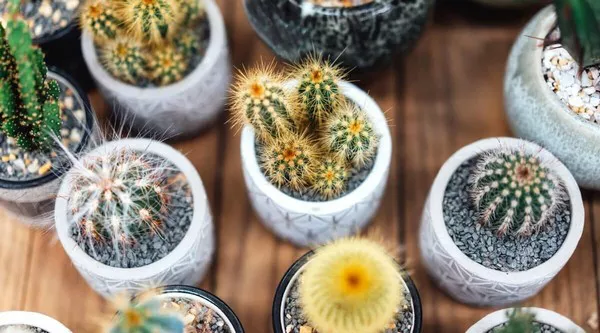Cacti, with their resilient and often prickly exteriors, are among the most fascinating plants on Earth. These desert dwellers, known for their ability to thrive in harsh conditions, hold a special allure, not least because of their stunning displays of flowers. Despite their seemingly inhospitable habitats, cacti burst forth with vibrant blooms, captivating observers worldwide. But what prompts these hardy succulents to produce such delicate and beautiful flowers? Delving into the depths of botany, ecology, and evolutionary biology, we uncover the secrets behind the enigmatic phenomenon of cactus blooms.
The Evolutionary Imperative: Survival Strategies in Extreme Environments
In the arid landscapes where cacti make their homes, resources are scarce, and conditions are unforgiving. To endure such challenges, cacti have evolved an array of adaptations, from their water-storing stems to their spiny defenses. Yet, amidst these harsh conditions, cacti also invest significant energy into producing flowers. Why would a plant allocate precious resources to such seemingly non-essential structures in an environment where every drop of water matters?
The answer lies in the evolutionary imperative of reproduction. Like all flowering plants, cacti depend on pollination to produce seeds and propagate their species. In the barren landscapes they inhabit, opportunities for pollination can be scarce and unpredictable. By producing showy flowers, cacti attract the attention of potential pollinators, ranging from bees and butterflies to birds and bats. These floral displays serve as beacons of life in the desert, drawing in pollinators from far and wide.
Adaptations for Arid Pollination: The Dance of Coevolution
The relationship between cacti and their pollinators is a testament to the intricate dance of coevolution. Over millions of years, both plants and pollinators have adapted to each other’s presence and behaviors, forging partnerships essential for mutual survival.
Cacti have evolved an array of adaptations to facilitate pollination in arid environments. Many species bloom at night, when temperatures are cooler and moisture loss is minimized, attracting nocturnal pollinators such as moths and bats. These flowers often emit strong, sweet fragrances to guide pollinators to their source in the darkness.
Other cacti species have developed flowers that open only for short periods during the day, coinciding with the activity patterns of diurnal pollinators like bees and butterflies. These flowers may offer rewards such as nectar or pollen, enticing insects with the promise of sustenance.
In turn, pollinators have coevolved with cacti, developing specialized adaptations to efficiently gather resources from these unique flowers. Long tongues, specialized mouthparts, and behaviors suited to extracting nectar or pollen from deep floral tubes or narrow crevices are just a few examples of the adaptations observed in cactus pollinators.
Environmental Triggers: Unlocking the Bloom Cycle
While the evolutionary imperative drives cacti to produce flowers, environmental triggers play a crucial role in determining when and how prolifically they bloom. In desert ecosystems, where rainfall is sporadic and unpredictable, cacti have evolved mechanisms to respond to moisture availability, temperature fluctuations, and other environmental cues.
Many cacti species exhibit a phenomenon known as “triggered flowering,” wherein blooms are induced by specific environmental conditions. For example, some species require a period of drought followed by a sudden influx of moisture to initiate flowering. Others may rely on temperature cues, with blooms triggered by a certain number of days or nights below a critical threshold.
In addition to external triggers, internal factors such as plant age, size, and health can influence a cactus’s propensity to bloom. Generally, mature and healthy individuals are more likely to produce flowers than young or stressed plants.
Beyond Reproduction: The Ecological Significance of Cactus Blooms
While the primary function of cactus blooms is reproduction, their significance extends far beyond the realm of plant biology. These ephemeral bursts of color play crucial roles in desert ecosystems, serving as vital resources for a diverse array of organisms.
The nectar and pollen provided by cactus flowers sustain not only pollinators but also a myriad of other creatures, including ants, beetles, and birds. In arid regions where food sources are scarce, cactus blooms can represent oases of abundance, supporting entire communities of organisms.
Furthermore, the fruits that develop from pollinated cactus flowers serve as important food sources for wildlife ranging from rodents and reptiles to mammals and birds. In this way, cacti contribute to the intricate web of life in desert ecosystems, playing a foundational role in supporting biodiversity and ecological resilience.
Cultivating Cactus Blooms: Tips for Gardeners and Enthusiasts
For gardeners and cactus enthusiasts alike, the prospect of witnessing these captivating blooms up close is a source of endless fascination. While cultivating cacti can present unique challenges, understanding the factors that influence bloom production can enhance the likelihood of success.
First and foremost, it’s essential to select cactus species that are well-suited to your local climate and growing conditions. While many cacti thrive in hot, dry environments, some species require cooler temperatures or higher humidity levels to bloom successfully.
Providing optimal growing conditions, including well-draining soil, ample sunlight, and minimal disturbance, can also encourage cacti to produce flowers. Avoid overwatering, as excessive moisture can lead to root rot and other problems that may inhibit bloom formation.
Finally, be patient and observant. Cacti operate on their own timetable, responding to environmental cues and internal rhythms that may not always align with human expectations. By cultivating a deeper understanding of your cacti’s needs and behaviors, you can create an environment conducive to prolific bloom production.
Conclusion
In the harsh landscapes of the desert, where life teeters on the edge of survival, the emergence of cactus blooms represents a triumph of resilience and adaptation. These ephemeral displays of beauty serve as reminders of nature’s ingenuity and the intricate connections that sustain life on Earth.
From the evolutionary imperative of reproduction to the ecological significance of floral resources, the story of cactus blooms is a testament to the marvels of the natural world. As we continue to unravel the mysteries of plant biology and ecology, may we always find inspiration in the enduring beauty of these desert treasures.


